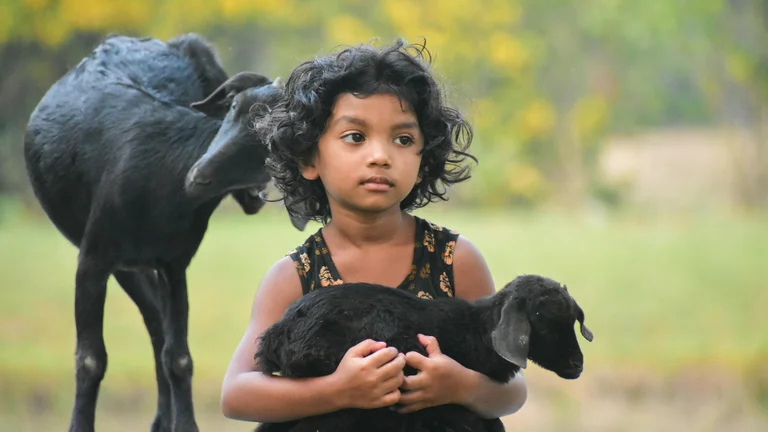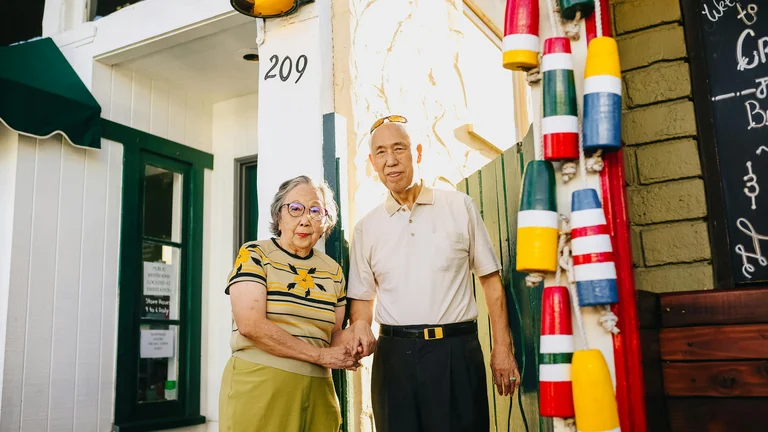Unforgettable K-Drama Birthday Parties: A Deep Dive into Iconic Celebrations

In the vivid world of Korean dramas (K-dramas), birthday parties often serve as poignant narrative devices that reveal character dynamics, exhibit cultural practices, and build emotional resonance. These celebrations are far more than simple festivities; they become key moments and turning points within storylines, encapsulating friendships, family tensions, and romantic gestures. This article meticulously explores the most memorable K-drama birthday parties, presenting detailed analyses of how each event unfolds, the cultural symbolism embedded within, and the unique character interactions that heighten their significance.
Each birthday party in K-dramas tends to craft an experience that balances warmth and drama. The extravagance of the event sometimes contrasts deeply with the personal struggles or hidden emotions characters endure, enriching the narrative texture. In addition, set design, music choice, guest list curation, and specific birthday traditions paint a comprehensive picture of Korean birthday celebrations. Throughout this exploration, we delve into multiple exemplary K-dramas known for outstanding birthday scenes, extracting lessons and insights about how these moments transcend mere celebration. The coverage includes step-by-step breakdowns of essential elements, emotional beats, and real-life applications for fans seeking to emulate these iconic parties, detailed with cultural and social context.
Exploring Iconic K-Drama Birthday Celebrations and Their Narrative Roles
Korean dramas often elevate birthday parties beyond casual events to symbolic milestones that either resolve conflict or ignite new tensions. A classic example appears in the drama "Reply 1988," wherein birthdays are intimate moments full of nostalgia and sincere connections among friends and family. The parties unearth generational differences, aspirations, and communal ties that frame the characters’ lives. The subtlety in how these celebrations are shot—the use of soft lighting, real-life settings, and authentic interactions—creates a deeply immersive experience for viewers.
Contrasting with the understated family gatherings, other dramas such as “Boys Over Flowers” present birthday parties as opulent, high-society affairs filled with drama, competition, and complex romantic entanglements. The clash of social status and personal desires becomes distinctly obvious in such settings. Here, birthdays evolve beyond personal milestones into battlegrounds of influence and power, with lavish decorations, extensive guest lists, and carefully orchestrated events.
In many K-dramas, the birthday party culminates in a key revelation or emotional climax. For instance, in “Fight for My Way,” the protagonist’s birthday is a moment of reflection on past failures and future hopes, with friends coming together in genuine support. This interplay between celebration and introspection is common. It signifies not just an age increment but a passage toward maturity and change, often depicted with heartfelt speeches, gift exchanges that carry hidden meanings, or symbolic acts.
Table: Comparison of Iconic K-Drama Birthday Parties
| K-Drama | Type of Celebration | Key Emotional Highlights | Cultural Elements | Impact on Story |
|---|---|---|---|---|
| Reply 1988 | Cozy family and neighborhood party | Nostalgia, family bonding, friendship | Traditional Korean birthday foods; simple decorations | Strengthens community ties; reveals character growth |
| Boys Over Flowers | Lavish, elite society party | Romantic tension, social conflict | Luxury venues, designer outfits, large guest lists | Escalates drama and rivalry |
| Fight for My Way | Casual get-together with close friends | Hope, support, personal reflection | Modern birthday cakes; informal atmosphere | Highlights character resilience and friendship |
| My Love from the Star | Surprise birthday party | Shock, affection, plot twist | Use of modern party gadgets and gifts | Triggers pivotal character development |
| Crash Landing on You | Mixed cultural and military setting | Unity, cultural exchange | North Korean traditional food; mixed customs | Builds trust and cultural bridge |
Step-by-Step Breakdown of a Classic K-Drama Birthday Party
To understand the painstaking detail in K-drama birthday parties, a stepwise analysis helps reveal the layers carefully built into these scenes. Consider a typical K-drama birthday party with elements drawn from multiple dramas to highlight recurring motifs and creative variations:
- Invitation and Arrival: Invitations are often handwritten, symbolizing sincerity. Scenes sometimes open with characters anxiously preparing or debating attendance, introducing underlying tensions or excitement.
- Venue Decoration: Decorations combine modern flair with personal touches. Balloons, handcrafted banners, and photographs emphasize intimacy rather than extravagance, though elite characters might favor luxury.
- Food and Drink: Cuisine highlights traditional elements like rice cakes (tteok), seasonal fruits, and subtle nods to Korean culinary heritage, accompanied by contemporary snacks or cakes.
- Gathering and Interactions: Guests arrive and engage in brief conversations that set the stage for forthcoming drama or warmth, often sprinkled with subtle subtext and backstory hints.
- Birthday Rituals: The protagonist blows out the candles, a moment frequently captured with slow motion or close-ups. Wishes made here can foreshadow future developments.
- Gift Exchange and Confessions: Gifts are symbolic, sometimes carrying hidden messages. This segment can include surprise confessions, apologies, or unexpected revelations.
- Music and Dance: Background music, sometimes a live performance, enhances mood shifts. Characters might dance, lending a naturalistic yet cinematic quality to the party.
- Departure and Aftermath: As guests leave, lingering looks or private conversations hint at unresolved issues or foreshadow new story arcs.
This breakdown reflects universal elements but is always adapted to individual drama contexts, ensuring freshness and relevance.
Emotional Complexity and Symbolism in K-Drama Birthday Parties
Beyond the festivities, birthday parties in K-dramas often operate as microcosms of larger thematic concerns. In many cases, the birthday symbolizes rebirth, personal transformation, or unresolved tension. The interplay of light and shadow in scene composition often mirrors these emotional layers, with brighter moments illuminating hope and darker tones reflecting conflict or regret.
For example, in the drama "Goblin," the protagonist’s birthday scenes are intertwined with themes of immortality and fate. The celebration's poignancy lies in its bittersweet nature, as characters confront mortality and eternal loneliness. This layering of celebration and melancholy heightens narrative depth, crafting a richer viewing experience.
Similarly, in "It's Okay to Not Be Okay," the birthday party acts as a catalyst for addressing trauma and healing. Here, the birthday becomes less about external celebration and more about internal reconciliation, represented visually through minimalistic decor and restrained social engagement, which contrasts with typical exuberant parties.
These symbolic treatments demonstrate how K-dramas use birthdays to explore not just joy, but complex psychological or societal themes, leveraging the occasion as a potent storytelling tool.
List of Recurring Themes and Cultural Traditions in K-Drama Birthday Parties
- Hwan-gap Celebration: The 60th birthday, traditionally celebrated with great importance in Korean culture, appears in some K-dramas, symbolizing longevity and respect.
- Baek-il and Doljanchi: The 100th day and first birthday celebrations sometimes feature cultural references emphasizing growth and wishes for the future.
- Food as Meaning: Specific dishes like seaweed soup (miyeok-guk) for birthdays are commonly shown to underline traditional practice.
- Gifts with Psychological Depth: Gifts often carry emotional weight, sometimes revealing characters’ secrets or true feelings.
- Group Bonding: The communal aspects of parties emphasize collective identity over individualism, a core cultural value.
In-depth Case Study: The Birthday Party in "Crash Landing on You"
One of the most striking birthday parties in recent K-dramas occurs in “Crash Landing on You.” Here, the protagonist’s birthday is set in a unique context, blending South Korean and North Korean cultural elements amid tense political undertones. The party remarkably balances humor, tenderness, and an undercurrent of anxiety.
The set design incorporates North Korean military aesthetic with colorful birthday decorations, showing a rare blend of rigidity and warmth. The inclusion of North Korean birthday foods such as cold noodles alongside standard Korean desserts adds authenticity. Characters from contrasting backgrounds come together, symbolizing hopes for unity and peace.
Emotional weight accrues as the party becomes a moment of personal connection amidst the geopolitical tension that defines the series. Dialogue during the party subtly reflects the ongoing conflict and hopes for a better future. This party transcends a mere social event, becoming emblematic of cross-cultural empathy and resilience under hardship.
Table: Key Elements of "Crash Landing on You" Birthday Party
| Aspect | Description | Significance |
|---|---|---|
| Venue | Military quarters decorated with colorful balloons and banners | Symbolizes blending of strict environment with personal celebration |
| Food | North Korean cuisine mixed with celebratory desserts | Highlights cultural identity and shared humanity |
| Guests | Mixture of military officers and civilians | Reflects complex social dynamics |
| Activities | Singing, gift exchanges, storytelling | Builds emotional intimacy and trust |
| Emotional Tone | Joyful yet tinged with subtle tension | Captures broader conflict through intimate moment |
How Fans Can Incorporate K-Drama Birthday Party Elements
Enthusiasts inspired by K-dramas often seek to recreate the magic of birthday celebrations seen on screen. To replicate the warmth and sophistication inherent in these scenes, fans can pay close attention to several aspects:
- Personalized Invitations: Handwritten or designed invitations based on the birthday person’s preferences set an intimate tone.
- Thematic Decorations: Choose themes meaningful to the individual, incorporating traditional Korean elements like hanbok motifs, pastel balloons, or calligraphy banners.
- Food Selection: Incorporate traditional Korean dishes such as tteok (rice cakes), miyeok-guk, and seasonal fruits alongside customized birthday cakes.
- Music Curation: Use soundtracks from favorite K-dramas or Korean ballads to evoke the desired mood.
- Gift Symbolism: Select gifts with personal or cultural significance, referring to how K-dramas use gift exchanges to communicate emotions and backstories.
- Emotional Expression: Encourage heartfelt speeches, private confessions, or moments of reflection to replicate the narrative depth found in dramas.
Detailed Guide: Planning a K-Drama Inspired Birthday Party
The preparation for a K-drama style birthday party requires thoughtful coordination that reflects cultural nuance and emotional resonance. Follow this step-by-step guide to achieve an authentic and memorable celebration:
- Research and Theme Selection: Identify which K-drama’s style or cultural setting resonates most with the birthday person.
- Venue Selection: Opt for a place that matches the tone—cozy home for intimate gatherings or elegant halls for grand parties.
- Invitation Design: Create invitations reflecting the chosen theme, inducing excitement while maintaining cultural respect.
- Decorations: Source or craft decorations including balloons, banners, photos, and ethnic motifs.
- Menu Planning: Combine traditional Korean dishes with popular party foods, adapting portion sizes and dietary preferences.
- Entertainment: Prepare playlists or live music options, arrange games or interactive activities inspired by K-drama scenes.
- Gift Strategy: Guide guests on meaningful gifts, perhaps including hand-made items or symbolic tokens.
- Document the Event: Assign a photographer or set up candid cameras to capture the event’s atmosphere like a drama shoot.
Attention to each of these steps ensures that the party not only looks authentic but also carries the emotional depth that characterizes memorable K-drama birthday celebrations.
Cultural Significance and Modern Adaptations of Birthday Parties in K-Dramas
Traditional Korean birthday parties revolve around rituals and foods like the first birthday celebration known as doljanchi, which marks a child’s survival and health. Such celebrations often include ceremonies invoking blessings and longevity, with enduring customs like the wearing of hanbok and the doljabi ritual where the child chooses symbolic objects to forecast their future.
Modern K-dramas frequently blend these traditional elements with contemporary party styles, reflecting Korea’s evolving society. Urban settings showcase sleek party venues and fusion cuisine, while smaller scenes emphasize casual gatherings focused on emotional authenticity. This juxtaposition mirrors Korea’s negotiation between preserving heritage and embracing modernization.
The portrayal of birthdays in K-dramas thus offers insights into Korean cultural identity and social values, often illustrating respect for elders, the importance of community, and the nuanced expectations surrounding personal milestones.
Psychological Impact and Audience Reception of Birthday Party Scenes
Birthday party scenes in K-dramas resonate powerfully with audiences because they tap into universal emotions—joy, nostalgia, vulnerability, and anticipation. These moments provide a canvas for emotional release and connection, often becoming highly anticipated sequences within episodes.
Research on viewer engagement suggests that such celebratory scenes increase empathy for characters by highlighting their humanity beyond plot conflicts. Viewers often relate personal experiences of birthdays to those depicted on screen, creating a bridge between fiction and reality. This emotional mirroring intensifies audience investment and memory retention.
Moreover, birthday parties in K-dramas sometimes contrast sharply with the main narrative tone, offering relief through warmth or deepening drama through unexpected twists. This dual function enhances storytelling effectiveness, making these scenes memorable landmarks within series arcs.
Table: Emotional Tones and Audience Responses Across Noted Birthday Parties
| K-Drama | Emotional Tone | Primary Audience Reaction | Memorability Factor |
|---|---|---|---|
| Reply 1988 | Warmth and nostalgia | Comfort and affection | Authentic family dynamics |
| Boys Over Flowers | Intensity and rivalry | Drama fascination | High stakes and romance |
| Fight for My Way | Hopeful and supportive | Inspiration and rooting | Relatable struggle and bonds |
| My Love from the Star | Surprise and affection | Emotional curiosity | Plot twists and warmth |
| Crash Landing on You | Heartfelt unity and tension | Emotional investment, cross-cultural respect | Unique blend of conflict and celebration |
Analyzing the Role of Supporting Characters During Birthday Celebrations
Supporting characters in K-drama birthday parties often provide context, comic relief, or emotional contrast. Their roles extend beyond passive guests; they actively propel plotlines and deepen main character development. For example, clashing personalities among attendees can introduce misunderstandings or tensions that develop later. Alternatively, compassionate gestures from secondary characters highlight themes of friendship and loyalty.
In dramas such as "Strong Woman Do Bong-soon," friends’ collective efforts to create a surprise birthday express unity and contribute to the protagonist’s growth. Their interactions offer multifaceted perspectives on the lead’s journey, transforming the birthday party into a nexus of relational dynamics.
Ultimately, these supporting roles enrich the narrative fabric, making birthday scenes complex tableaux of interpersonal drama and emotional exchange.
Crafting a Lasting Impression: Cinematography and Music in Birthday Scenes
Technical choices such as camera angles, lighting, and soundtrack composition play critical roles in conveying the mood and significance of birthday parties in K-dramas. Close-up shots of candles being blown or gifts being unwrapped create intimacy. Soft, warm lighting casts a nostalgic or tender glow, while sharper contrasts can underscore tension or revelation.
Musical accompaniment ranges from gentle acoustic melodies during heartfelt moments to upbeat pop tracks for celebratory sequences. Some dramas incorporate original scores that become emblematic of specific characters or themes introduced during birthdays.
This careful orchestration ensures that viewers experience an immersive and emotionally textured scene rather than a generic party snapshot. The synergy between visual and auditory elements cement these scenes in audience memory long after the episode ends.
FAQ - Most Memorable K-Drama Birthday Parties
Why are birthday parties so significant in K-dramas?
Birthday parties in K-dramas often serve as pivotal narrative moments that reveal character relationships, highlight cultural traditions, and trigger emotional or plot developments.
What traditional Korean elements appear in K-drama birthday parties?
Common traditional elements include serving rice cakes (tteok), the symbolic use of seaweed soup (miyeok-guk), wearing hanbok, and including rituals like doljanchi for the first birthday.
How do K-dramas balance modern and traditional birthday celebrations?
K-dramas frequently blend modern decorations, venues, and foods with traditional practices, reflecting Korea’s evolving cultural landscape while maintaining emotional authenticity.
Can fans replicate K-drama birthday parties in real life?
Yes, by incorporating personalized invitations, thematic decorations, Korean cuisine, meaningful gift exchanges, and thoughtful entertainment, fans can create similarly emotional and authentic birthday celebrations.
What role do supporting characters play in birthday party scenes?
Supporting characters often provide emotional contrast, comic relief, or plot progression through their interactions, enhancing the complexity and significance of the birthday event.
K-drama birthday parties serve as emotionally charged, culturally rich narrative moments that reveal character dynamics and advance plots. These scenes blend traditional Korean customs with modern elements, offering viewers authentic, memorable celebrations that deepen storytelling and resonate universally.
Memorable birthday parties in K-dramas transcend simple celebration scenes, serving as rich narrative devices filled with cultural symbolism, emotional depth, and pivotal character interactions. They offer viewers both a window into Korean social traditions and a platform for exploring universal themes of growth, connection, and conflict. The meticulous portrayal of these celebrations—through décor, food, music, and nuanced performances—ensures their lasting impact on audiences and positions them as defining moments within the stories.






